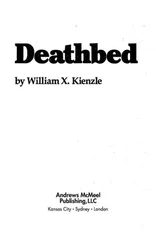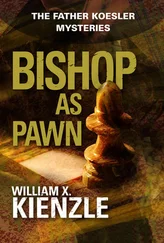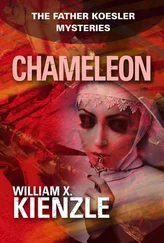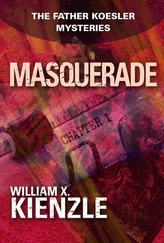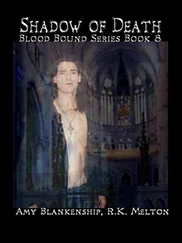The crowd loved it. There were mixed cries of “ooh!” and “aah!” and the good old faithful, “Viva il Papa!” by the unimaginative, and some explanation by Italians for the benefit of their foreign guests, “Da Papa, shesa lova da bambino!”
The Pope having demonstrated his love for little children, or at least for this designated baby, the procession moved on as cheers continued to ricochet through the basilica.
The sedia gestatoria was lowered when the Pope reached the main altar of St. Peter’s. Leo XIV completed two circles around the fringe area of the altar, pressing the flesh of princes and princesses, heads of state, ambassadors, and two small Italian nuns. The strobes and flashbulbs continued to pop, even from the rear of the cathedral whence their light affected only the consolation of the amateur photographers who were popping them.
Once the actual Mass began, matters not only became more solemn, they grew in beauty. Amplified voices of the Sistine Choir proved this was one of the world’s most exceptional singing groups.
But Joe Cox had a difficult time concentrating on a ceremony he neither understood nor believed in. His mind and his gaze wandered. He focused on the delegation of American Cardinals in attendance.
“Pat,” he whispered, “look at the American Cardinals over there.” He gestured in their direction. “Do you notice anything out of the ordinary?”
“No, not really. Like what?”
“You were telling me how the vestments of the Cardinals had been simplified. How, instead of long red robes and ermine capes, they now wear just the red cassock and white surplice, right? Well, with that in mind, look again.”
Lennon focused more seriously on the group. “Well, I’ll be-that so-and-so from Los Angeles is wearing a gold surplice!”
“Just in case anyone forgets that California is the Golden State!”
It was time for bestowing the ceremonial ring of office, a surprisingly simple circle of silver with no stone, only an inscription.
Since the new Cardinals were in alphabetical order, Cardinal Mark Boyle was the first to be escorted up to Pope Leo XIV. Boyle knelt before the seated pontiff, who positioned the ring while intoning, “Receive the ring from the hand of Peter and know that your love for the Church will be reinforced by love for the prince of the Apostles.”
Cox thought that a rather self-serving statement. He did not know that diocesan priests, when they are ordained, are not called upon to promise to serve the people to whom they will be sent. Rather, they promise reverence and obedience to their ordaining bishop and his successors.
Again Cox mentally wandered from the ceremony at hand.
“Hey, look over there!” He nudged Lennon.
“Where?”
“The Chicago Cardinal—what’s his name?”
“Cardinal William Hitchcock.”
“Yeah, Wild Bill Hitchcock. I think he’s sitting on two chairs.”
“Go on!” But as everyone, including Cardinal Hitchcock, stood, it was obvious he had, indeed, been sitting on two chairs. Cox snickered.
“Joe! Pay attention!” Lennon scolded.
But there was nothing further to which to pay attention. The ceremony was concluded. The ecclesial dignitaries formed in procession and began the long march out. Again the Pope was carried, surrounded by guards and accompanied by cheers and illuminated by flashbulbs and strobe lights.
As Irene, Lennon, and Cox turned to leave, they beheld a scene worthy of a De Mille epic. A sea of humanity was being funneled through what was in actuality a gigantic door space. But from their perspective it appeared to be that narrow gate Jesus spoke of through which the rich could not easily pass.
There was little choice. It was either wait at their places for an additional hour or so for the basilica to empty, or test their fate and put their lives on the line and join the exiting crowd.
“What the hell,” Cox urged, “let’s try it. You only live once.”
“Yeah,” Lennon agreed, “and this may be it!”
As they made their way down the steps they were quite literally swept up by the crowd. Cox was convinced that, were he to take both feet from the floor at once, he would be carried off by the press of the crowd. But he feared if he did he just might fall. And that would mean death by stampede.
Irene was sure she had been pinched—several times. But for now, her one thought was to escape this adventure alive. Later— if there were a later—would be time enough to check for bruises.
As he was vortexed through the doorway, Cox witnessed an almost unbelievable sight. A man was attempting to get back into the basilica. As he and Cox passed as buffeted ships in the night, the man was pulling himself from one shoulder to the next, as one literally swimming against the current. As far as Cox could tell, the man did well merely to remain in situ and not be swept backwards.
From time to time, in future years. Cox would wonder whatever had happened to that man and what he was trying to accomplish that had motivated him to such a bizarre form of suicide.
6.
The tables sagged and the shelves drooped, so heavily laden were they with foods—all of them delectable.
Trays filled with rich varieties of antipasto alternated with trays heaped with fresh figs, berries, cream puffs, salads. Pans overflowed with red tomatoes, red peppers, green peppers, clams, and melons. Cucumbers were fitted between stalks of fresh asparagus that nestled among fruit-filled platters. On the topmost shelf was an unprepared leg of calf. Peeking from behind the leg were spinach and various kinds of lettuce. The aromas mingled to whet the appetites of all who entered the restaurant.
Gallucci’s was located on a typically narrow Roman street off the Via Merulana near the Church of Santa Maria Maggiore.
It was not one of Rome’s more famous or popular restaurants. But for the few cognoscenti it was among the very best Rome had to offer. And Rome had some of the best in Europe.
One who knew of Gallucci’s and frequented it when in Rome was Inspector Walter Koznicki. He had chosen this spot to meet Father Koesler and the deacon Ramon Toussaint at 6:00 p.m. partly because he prized the place and partly because he knew they could conduct a secluded meeting there during dinner.
Koznicki arrived at Gallucci’s several minutes before six. Koesler and Toussaint arrived together promptly at six. The two had spent much of this day together renewing their friendship. In Detroit, Toussaint and his wife, Emerenciana, had been extremely close friends of Koesler’s. A friendship that had survived even the Toussaints’ embroilment in that episode wherein violent justice was brought to those who were escaping the punitive arm of the law. Shortly thereafter, the Toussaints had left to relocate in San Francisco. Koesler had not seen them since.
Koesler, in his half-Latin, half-quasi-Italian, informed the maî-tre d’ that they were with the Koznicki party. They were shown to a private booth in the rear of the restaurant, where they sat and absorbed the sight and smell of tempting, tantalizing food.
Bottle after bottle of wine lined those shelves not piled with food. Each table was topped by a white cloth over the traditional red and white checkered cloth. In sum, it resembled most other authentic Roman restaurants. But Koznicki assured them it was far from merely average.
Although Koznicki had been well aware of Toussaint, had seen photos of him, and had even seen the man at a distance, the two had never formally met.
As Koesler introduced them, the Inspector appraised the deacon.
Though in his middle years, Toussaint appeared to be an exceptionally strong and vigorous man. Koznicki also noted there seemed to be much going on behind Toussaint’s lively brown eyes. The Inspector guessed Toussaint would be a worthy chess opponent; he was not likely to come in second in any game of wits.
Читать дальше




